Dear Television,
What color was Emily Dickinson’s hair? The hair of Hailee Steinfeld — who plays the central character in AppleTV’s excellent Dickinson,
which you should all be watching — flows in stirring thick brunette
cascades around her strong face and elegant shoulders. These rich locks,
which give the constant and hot impression that Dickinson, in an iconic
gesture of white lady liberation, just a moment ago released her hair
from a swirling updo, aren’t just a look. In Dickinson, hair is
a narrative strategy. The opening episodes of last year’s first season
juxtaposed Emily’s flowing tresses with the careful and tidy looks of
the other white women around her. Unlike these women, her mother and
sister and lover, Emily Dickinson, we seem initially to be meant to see,
is free, or wants to be — free from constraint, free from convention,
free from the shitty ache of bobby pins.
Free in fact from the image of Dickinson you may have had in your
mind — or at least, the one you maybe had before you started to see
Steinfeld-as-Dickinson on billboards and internet ads, hair flowing,
gazing at you with piercing enticement. If the hair rules aren’t fair,
break them! Watch this Dickinson, these ads promise us, and
you’ll see the free Dickinson, the one you may only have dared to
imagine when all you have seen of her comes from one extremely famous
daguerreotype:
Listen. I have been writing about televisual hair studies since Connie Britton, I have spent literally hours of my one and precious life pondering the hair of television ladies from Gilead to Westeros to (as special consultant) the NFL, so I can say with confidence that Dickinson is a major Hair Studies event.
Critical hair studies,
in my mind, is special branch of gender studies that, when partnered
with media analysis, finds in TV hair a barometer for what kind of
reality, what kind of relation, a given show can imagine for its
(especially women) characters. It’s a part of gendered, raced, world
building; how a show teaches us about what, in its portrait of gender,
counts as real.
And, Dear Television, let me bring you the good news that, considered from this perspective, Dickinson is one of our richest televisual texts yet. What Dickinson
does with the fantasy and reality of Emily Dickinson’s hair — how her
hair plays into what the show aims to make us consider about ourselves,
the past, and the fantasies and realities of raced gender — ripens into a
lush part of its broader exploration about what freedom might mean. A
spoiler here (the first of several, but mostly about season 1): Dickinson is so much more subtle about hair than the opening flowing-hair-is-freedom imagery would lead us to believe.
But that just makes it all the more interesting that when it comes to hair, Dickinson
makes a significant choice. Hailee Steinfeld’s hair, like the hair we
see when we look at the famous daguerreotype, is a dark, rich, brown.
But the real Emily Dickinson’s hair was — wait for it — red!
¤
Do you care that it was red? About your (my) concerns, Dickinson takes a cavalier tone. C’mon, it says, c’mon: take this opium, throw this party, sneak into this private event, crawl into this narrow bed.
Are you (me) concerned something might go wrong, something with, hmm,
poetry, historical accuracy, Emily Dickinson’s legacy itself? Are you
concerned that the show’s zaniness may at moments be the teensiest bit grating or that emphasizing poor grieving Henry David Thoreau’s statement neck beard is okay funny but really not actually very fair (this one especially, me)? Don’t
be so basic. Very much as any charismatic young woman herself might,
this show’s vibrancy renders most potential criticisms moot. Dickinson,
as one relevant aesthetic metric would put it, fully slaps, and here it
is, inviting you. Go with it, to the side of freedom and youth. Go, or
feel yourself morph into what you — you (me), as a lover of the 19th
century, of Emily Dickinson, of bookish rebels, of girlhood — never
wanted to be: a prude.
Despite my antiquarian/fan girl concern trolling, I am happy to report that by and large, while Dickinson
is famed for its taking of anachronistic stylistic liberties —
Dickinson swearing, Dickinson twerking, Dickinson scrabbling at Wiz
Khalifa’s (I mean, Death’s) belt buckle — it more than gets away with
them, not just because of its sheer unrepentant commitment, but also
because while these aesthetic choices are not actually true they are
sort of spiritually true, in that they work to represent for us Emily
Dickinson’s commitment to a lived energetic weirdness, which surely she had.
And yet still I want to come picking about this red hair point. It’s
not that I think it’s somehow “wrong” ethically for the show to
creatively reinterpret Dickinson as a brunette. Even if it’s inaccurate,
I don’t read it as necessarily a mistake. But I do think that the
swirling hair is, like the twerking, a kind of fascinating aesthetic
revisionism that, unlike the twerking, remains mostly invisible
as such. And — hello, Dear Television, reading this in the midst of
January 2021 — revisionism is a question it is pressing for us to
consider, as showrunner and writer Alena Smith (who, full disclosure, I
know a little on the internet), is clearly aware.
But before we get into the stakes of revision, let’s consider the
hair itself. How do I know it’s red? Although I have not myself seen it,
a lock of her hair exists. Let’s all look at it and consider:
Now, you may say, that this is not red, at least it’s not Anne Shirley-fighting-with-Gilbert-Blythe
levels of red. And I would agree with you but would also counter that
this is at least an Anne-of-Ingleside shade of auburn, and would
furthermore point out — incontrovertibly, I think — that any Anne
Shirley would have looked at Hailee Steinfeld’s dark tresses with a
sense of profound envy.
But you don’t have to take my word for it. Emily Dickinson once described her hair by saying that it was “bold, like the Chestnut Bur,” (sic) which could either be a color or a hair style, and either way is not
how I would describe the flowing tresses of Hailee Steinfeld. Yet I
agree that Dickinson’s own words are (guess what) gnomically
inconclusive. So, for further corroboration, I consulted with two of the
foremost scholars of 19th-century poetics, both of whom also are
exemplary models of human noticing, Meredith McGill and Virginia Jackson.
McGill said, “chestnut — drawing on textual, rather than follicular
evidence.” When I asked Jackson to go on record regarding Dickinson’s
hair color, she waited five hours before texting me a definitive word:
“red.” Take it to the bank!
In case you cannot picture it, this is what a chestnut burr looks like. It does not look like Hailee Steinfeld.
Why does it matter? If Steinfeld, for this role, had dyed her hair
red, I think it would have signaled to us that the show was interested
in getting its aesthetics “right” in the factual, rather than spiritual,
sense of the word. What we get instead is a constant dialogue with the
familiar Dickinson fantasy, represented most famously by the
daguerreotype, of a tiny, bobby-pinned-down, dark-haired “nun of
Amherst” — Steinfeld’s hair matters because it allows the show to
demonstrate the link textbooks have always made, implicitly, between
Dickinson’s hair and other parts of her poetry and experience. This
visual link, even in textbooks, has been a kind of storytelling, a
fantasy about being a (white) woman in the 19th century.
Crucially, what Dickinson offers us in place of this fantasy is not an attempt at reality but rather another fantasy. It knows this, all the time.
How we fantasize about Emily Dickinson — an emblem of 19th-century
white womanhood, and, in fact, one of the major sites of contemporary
projections about what the forms of the past were like — is what this
show wants its viewers to consider. Or, maybe: it wants us to consider
what happens to our view of the present when our fantasies about
Dickinson’s past change.
Put differently, Dickinson’s value comes from what it helps
visualize about crucial questions: what do historic fantasies have to do
with our possible collective futures? And: which historic fantasies of
femininity and freedom are available to whom?
¤
Here’s a formative text into my own history of hair scholarship: the 1985 movie Witness.
Witness, which I saw when I was nine, is a movie about how
hot it is to imagine Harrison Ford wearing Amish clothes and doing Amish
carpentry tasks and falling in love with a beautiful widowed Amish
mother, Kelly McGillis. There’s also a plot about a murder and
“witnessing” and police corruption and stuff, but all that for me was
mostly an excuse to get Harrison Ford into a (white) fantasy of the 19th
century. Watching it was like suddenly reading Little House and watching Han Solo all at once, which, what could be better? Kelly
McGillis, in the movie, faces the extremely fraught and hot decision of
whether she would like to stay in the Amish 19th century, with its
rules and limits and safety, or join Harrison Ford somewhere/sometime
else.
The movie represents McGillis’s choice about her erotic and social desires with — surprise! — a choice about her hair. In a key scene which I hope will be emblazoned in my memory until I die,
McGillis gazes intently at Ford through her kitchen window while he
(really this is what happens, let’s close read it forever) erects a
large white house (for birds) in the yard. Surging with emotion,
McGillis makes her choice: she chooses desire, she chooses love, she
chooses freedom! Thus, she takes off her bonnet, uncovering her hair, and rushes out the door into one of cinema’s truly world-class passionate embraces.

Witness, which I recall as being quite good, has other
points besides the hair freedom/Amish hotness one; if I watched the
whole thing again I would probably have some Jacobin-article
type things to say about secularism and community in the Reagan era. But
as a nine-year-old girl, the key lesson was clear: if you want to be
the person who gets to make out with Han Solo in a field, hair freedom is what you need.
In other words, Witness, like Dickinson and many
other popular fictions, offers a frisson-y encounter between the present
and a 19th-century past, a way of transporting the viewer’s
contemporary values to an imagined historical scene. And there’s a
reason why so many stories tap into the electricity of this encounter,
why so many romance novels take place in the 19th-century past or among
the Amish, which in case you didn’t know is totally a thing. The reason has to do with a desire to feel free. In a forthcoming book I will shamelessly plug,
Arielle Zibrak argues about romance novels: “If the 19th century is the
imagined primal scene of gendered oppression for modern women —
conjuring images of corsets and confinement — it’s no surprise that
books where the corsets are ripped off and the sex that was previously
only a vague fantasy is made real are cathartic to so many readers.” The
more obvious the confinement the more gratifying the rebellion — the
possibility for which turns confinement into its own tumescent-feeling
source of pleasure.
Speaking personally as someone who basically refuses to read novels
set in the present moment, I like fantasies of the past because they
make a different frame to consider choices, particularly choices about
self-determination. Self-determination right now feels so exhausting;
I’d rather hang out in a situation where the seeming obstacle to
self-determination is just a bonnet than can, with great panache, be
tossed aside.
But careful scholars of Hair Studies, such as the Dickinson
production team, know that Hair Freedom is a more complicated matter
than it first may appear. If you read your way through an archive of
19th century imagery about bonnets, bonnet removal, social freedom, and
Hair Narrative (which, here is a whole syllabus for you!) you’ll come to see that many narratives of hair freedom (Witness,
I’m going to say, is one) work similarly to what Foucualt called the
repressive hypothesis, or rather, reveal something that Foucault might
have come up with about pleasure, identity, and repression if he had
ever in his life thought about what it was like to be a girl (and had
not been bald). Just think what he might have written about “bodies and
pleasures” if he had ever been presented with the opportunity to buy
“maximum body” shampoo.
Anyway, all this context is important to understand Dickinson’s contribution to feminist political theory, which is what Hair Studies is, because — and I cannot stress this enough — rejecting
an overly simplified understanding of hair freedom (and, thus,
political freedom) is the whole point of Dickinson season 1. Emily
Dickinson, in Dickinson, needs a lot of things — personal agency, creative role models, intense personal connection. She begins the series believing that hair freedom will help her achieve those things. She ends the season realizing that hair freedom will not.
Here is a good place for me to say that my experience of watching Dickinson
Season 1 was a slow build of appreciation — each episode is better than
the last. And the whole thing is most compelling when you re-watch so
you can really see the truly elegant formal parallels the show sets up.
For instance, there’s the matched encounters with idealistic/spoiled
dude writer Henry David Thoreau (hair studies via neck beard, sigh) and
hustling/awesome lady writer Louisa May Alcott.
There’s also the juxtaposition between the super-queer party where
Emily gets high and dances with a hallucinated bee and the
super-straight-seeming Christmas dinner where Emily grates a “buttload
of nutmeg” to show her beau she can be a “good little women.” These
parallels seem, at first, like opposites, but in fact aren’t — Dickinson
mostly sets up such binaries to reject them, which becomes dazzlingly
clear during Emily’s Christmas Dinner, in which men hardly talk and all
the women orgasm — either literally or in semi coded terms, i.e., by
conceiving the plot of Little Women or by exclaiming that “the nutmeg is lovely!”
And nowhere is the rejection of simple binaries more in evidence than
in the first and last episodes of the season and their contrasting
treatments of hair. Even a quick over view will suffice.
Here are some images from episode one:
And here is what you need to see about episode 10:
The iconography could not be clearer. If you just looked at the pictures after a girlhood spent watching Witness and believing the repressive hair hypothesis you might believe that Dickinson is a sad story, a tragedy — a story of a young woman going from freedom and innocence to confinement and grief. Dickinson ends with Emily in her room, while her now-married friend and lover Sue literally floats away in a hot air balloon.
But that is not Dickinson’s plot. In the final scenes, when
Emily looks the most confined, she is also the most powerful. It’s when
her dress is black and her hair is bunned that Emily says, finally,
both meme-ably and with dead seriousness: I am a poet. Her tied back
hair, in this image, does not illustrate her submission to rules;
instead, the bun parallels her ability to regulate her own boundaries.
Her hair selects its own society, then shuts, to the room of her own,
the door.
What happens over the course of the first season to get Emily to this
poetical point? How does the season’s chiasmatic structure take her to
this new realization about creative agency and the freedom possible in
constraint? That’s a complicated question. It has something to do with
falling in love with and then losing her boyfriend Ben (the excellently
cast Matt Lauria who came to Dickinson after pursuing a degree
in Hair Studies in Dillon, Texas with Connie Britton). And it has
something to do with Sue’s marriage: Sue may look free but she is also,
secretly, pregnant. She carries her confinement with her, her belly
swelling like the hot air balloon that carries her away. Emily, shutting
herself away from marriage/California, frees herself from this
possibility too.
But Emily’s realization about the conditions of her freedom is not only about romance.
It has more to do with Emily’s changing relation to the women around
her, and specifically to women’s labor. In the first episode
(significantly, during the bedroom scene pictured — disturbingly —
above) Emily convinces her father to hire a maid, an Irish woman named
Maggie (Darlene Hunt), who changes the dynamic of gender and work in the
household. In the final episode, when Sue marries Austin, the only two
people who know about her secret pregnancy are Emily and Betty, the
Black woman who makes and fits Sue’s wedding dress (and dramatically
repairs Mrs. Dickinson’s when she, intoxicated, burns it on the kitchen
fire).
What I’m saying is that Dickinson highlights how Emily Dickinson’s decisions about her freedom and its style take place in a context in which women are working,
all the time. Specifically, women of color, are working to create the
signs of femininity — the beautiful dresses, the meals — against which
white women then wonder if they should rebel.
To the extent it highlights hair as work, Dickinson has
learned lessons vividly delivered in African American literature — I
would recommend particularly the SCATHING WITH FIRE chapter 12 of Hannah
Crafts’s The Bondwoman’s Narrative, one of the earliest known novels written by an African American woman (written, we might note, at almost the same time as Dickinson takes place, and, like Dickinson’s poems, though also completely fucking differently, hidden away all the author’s life).
To read simply and tightly bound hair and other frequently-deployed
symbols of femininity — corsets, kitchens, pregnant bellies — as
evidence of only constriction is to miss something Dickinson
knows quite well; for one thing, that those symbols of “femininity” are
powerfully racialized. It’s not confinement or mobility, tight hair or
free flowing, that signals freedom. It’s the ability to maneuver within
those symbols, the ability to wield them, from which women’s power —
power, often, waged by white women — can come.
Which is why it’s important that Dickinson season 2 seems
primed to raise for us a crucial question: what would we have to
recognize about femininity as a set of emotions, styles, and symbols, in
order for women, across class and race, to tell a story about creating
freedom together?
¤
In Dickinson S2E3, Hattie, a Dickinson family servant, (Ayo Edebiri,
who co-wrote the amazing eighth episode of the current season: you all,
just wait), rolls her eyes at Emily’s request to serve as a medium
during a seance. “I don’t need to talk to any more dead white people,”
says Hattie. The line, addressed to Emily Dickinson, is also about
Emily Dickinson, and Dickinson, too: it’s one of the many head-jerky lines Dickinson
offers as a kind of metacommentary about its own project. Who is it,
really, who needs to talk more about (or to) dead white people?

That question is complicated, but one answer is that the stories
white people told and wrote about themselves in exactly the moment Dickinson takes
place have left, for many reasons, an outsized mark on American popular
culture. Because we are living within that legacy, it’s worth
remembering how often those stories featured a beautiful white woman,
struggling to find her place in the world. A common feature of the
beautiful white women in these stories is that all of them, all of them,
all of them, have really amazing hair.
So much is this the case, in fact, that an oft-cited index
of the best-selling stories from this time (collated by Nina Baym,
genius) includes the hair-color of both the heroine and the antiheroine.
The codes of how hair could tell a reader what to expect from a story
were traveling around just like Dickinson’s Emily Dickinson, on
the early trains of the 19th century. It was, put one way, the
beginning of hair studies — the beginning of the white mass cultural
myth that you could look at a (white) woman’s hair and tell whether she
was good, tell whether she was free.
For me and the white women of my life, these stories of moral white
womanhood have been something of a bane, but also, in ways that are less
often brought to light, a blessing. Grappling with the legacy of this
powerful story, white women can easily understand ourselves as victims
in the very story that aimed to lift us up. White women need to get free
of this story, many white feminists have told us (me); we need to wash
it right out of their hair like a bad, oppressive man.
But when white women like me stage ourselves as the victims of the
story of our constriction, it is easy to miss how that story was always
a story. It was a story that celebrated a white domestic scene made for
and by white women, often at huge, violent expense to people of color.
One of the main functions of that story was to conceal the ways in which
white women were hardly passive “angels in the house” — they
aggressively perpetuated the unfreedom of people and women of color.
Hattie/Edebiri’s line resonates with a whole tradition of Black feminist
scholars — here I’ll mention just a few who I have been reading while
writing about Dickinson: Claudia Rankine (who specifically writes about “freedom” and blondness), Stephanie Jones-Rogers, Koritha Mitchell, and Michelle D. Commander.
These scholars show how received narratives about white women obscure
two things simultaneously: the cruelty that 19th century white women
perpetuated in order to establish the domestic femininity for which they
were praised, and what Black women, despite the ongoing threat of that
cruelty, have managed to accomplish. Among these accomplishments, as
Hattie will go on to show, is to assert their own visibility — and to
write stories of their own ghosts.
Among the many shows right now provocatively representing the dead white people of the 19th century (most obviously Bridgerton, another major hair studies event) Dickinson
stands out to me for how it so forcefully engages the stories that
white people have reiterated and believed about dead white women — and,
by extension, about white women now.
It’s easy to see the political stakes of some kinds of historical
veracity and fantasy — debates about constitutional originalism, for
example, or the “greatness” of the American past. We talk about how
these issues have real force for the security of people living in this
strange country now. Sometimes aesthetic and symbolic fantasy register
too: there has been a lot of discussion of that guy with the confederate
flag invading the capital.
The inheritance of women’s style isn’t trivial; it matters for in this conversation too. When I look at, for instance, Jenna Ryan, realtor, I see her long flowing locks — cascading like the falsely “free” Emily of Dickinson
episode 1. Hair studies would encourage us to see Jenna Ryan’s styling
not as incidental to history or politics, but rather a perniciously
deployed symbol of white supremacy guised as “freedom,” similar in power
to the confederate flag as it bursts into the capital, and just as
deadly, precisely because more subtle.
What I’m hoping to clarify about Dickinson’s forceful encounter with the fantasy of women’s aesthetics, as well as how to read Dickinson
within the context of multiple similar shows, is that what counts as
history and fantasy within these depictions isn’t just a matter of some
“well, actually” squabbling about the past. Reading carefully, we can
see that what counts on television as “historical realism” can in fact
be (and often is) a re-deployment of a fictionalized narrative produced
by those hoping to disguise brutality. Conversely, fantastic and
escapist versions of the past can be provocative and necessary
challenges to what counts, in the “real world,” as common sense.
Put differently, revisionist versions of the past can expose
realities that some originalist versions try to conceal. I wouldn’t
learn as much about what Emily Dickinson means to me, a 21st-century
white woman, if Dickinson had played its aesthetic decisions
more straight. And I wouldn’t be able to see so clearly what matters
about the symbolism of white femininity in the present without Dickinson’s treatment of Emily Dickinson’s hair.
Here for Hattie and Lavinia,
Sarah
¤























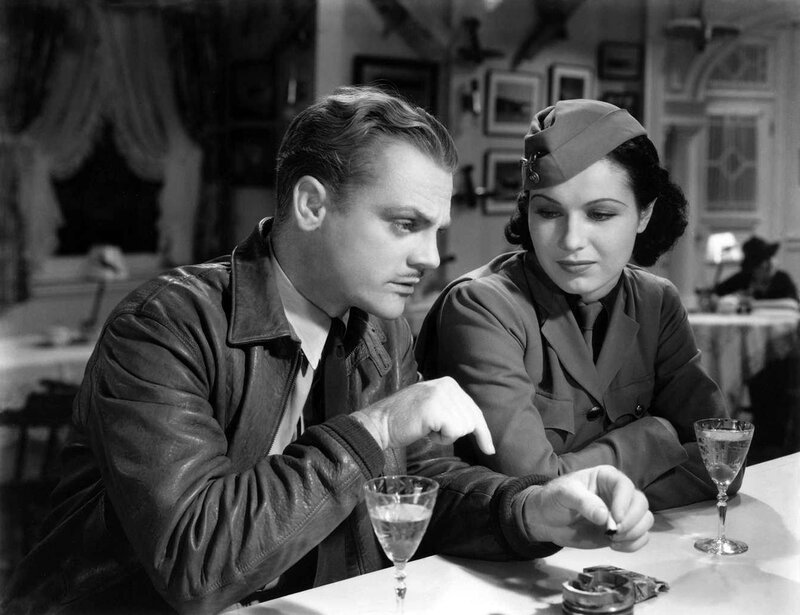
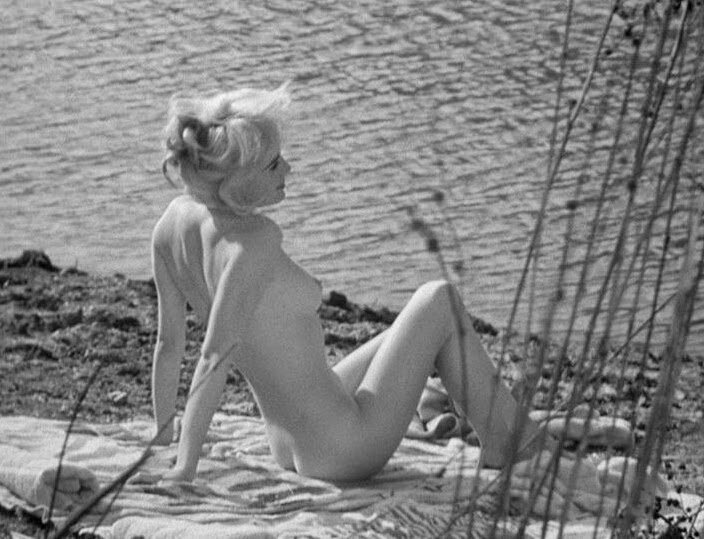
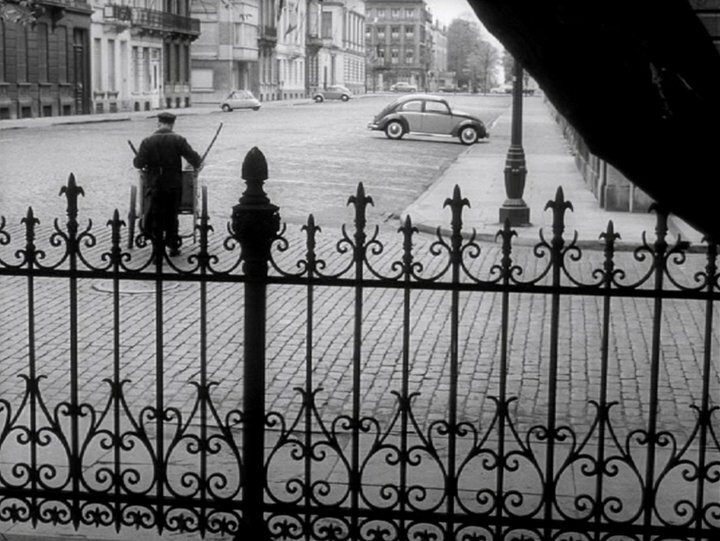
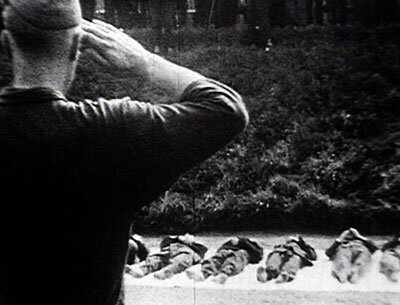
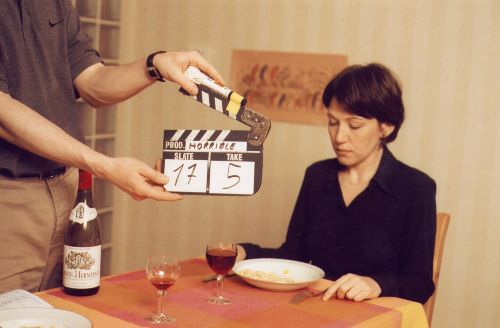

















très bonne liste cher monsieur
mais même pour un jeune le nombre de films antérieurs à 2020 est supérieur au nombre de films sortis en 2020, et moi j'ai oublié RIOT IN CELL BLOCK 11 (très bon bray espagnol avec st anglais): MOTIN EN EL PABELLON 11 (avec un menu illustré par une image qui vient d'un autre film!). Caramba! (bon je m'excuse pour les accents et les "!" inversés absents).